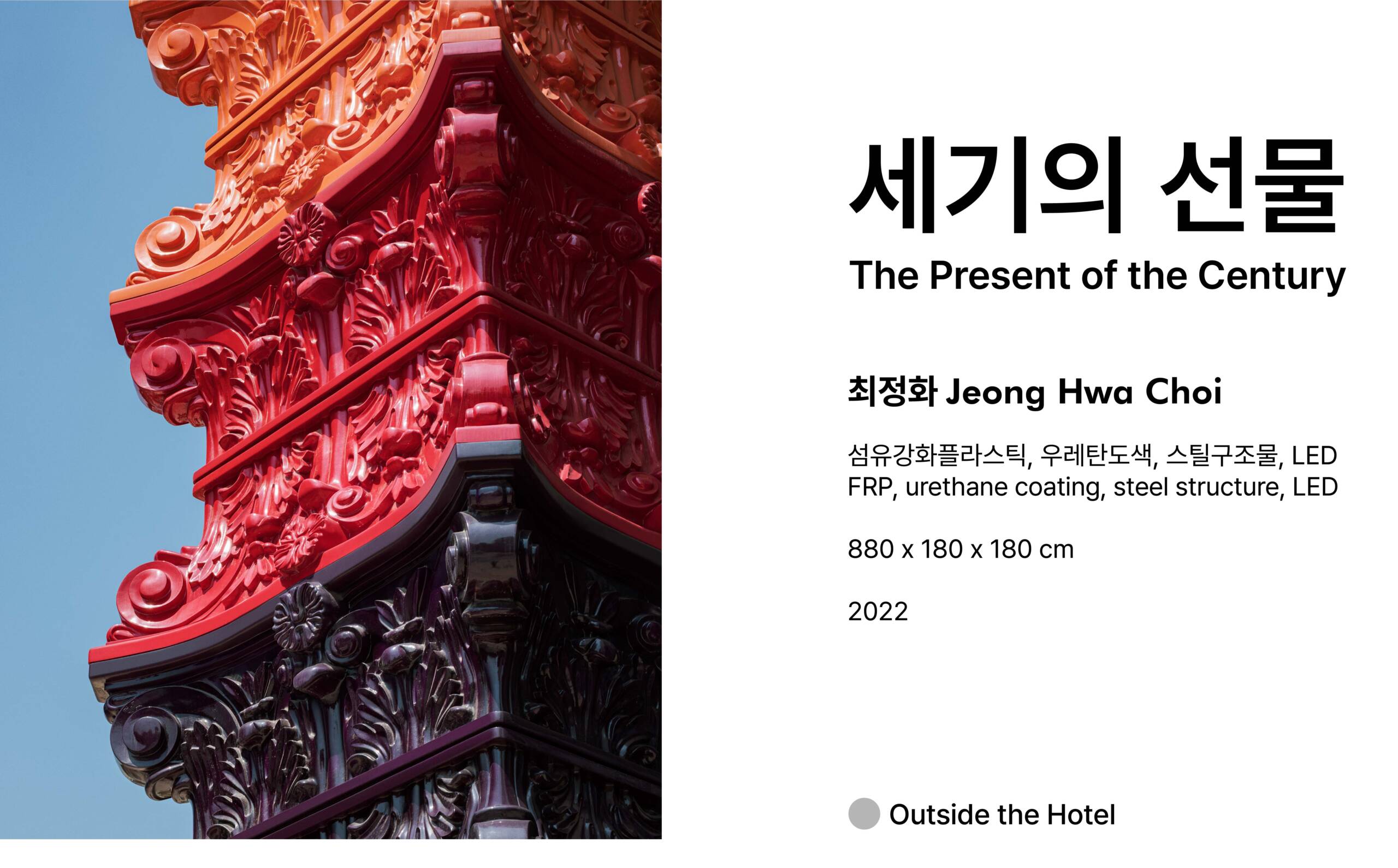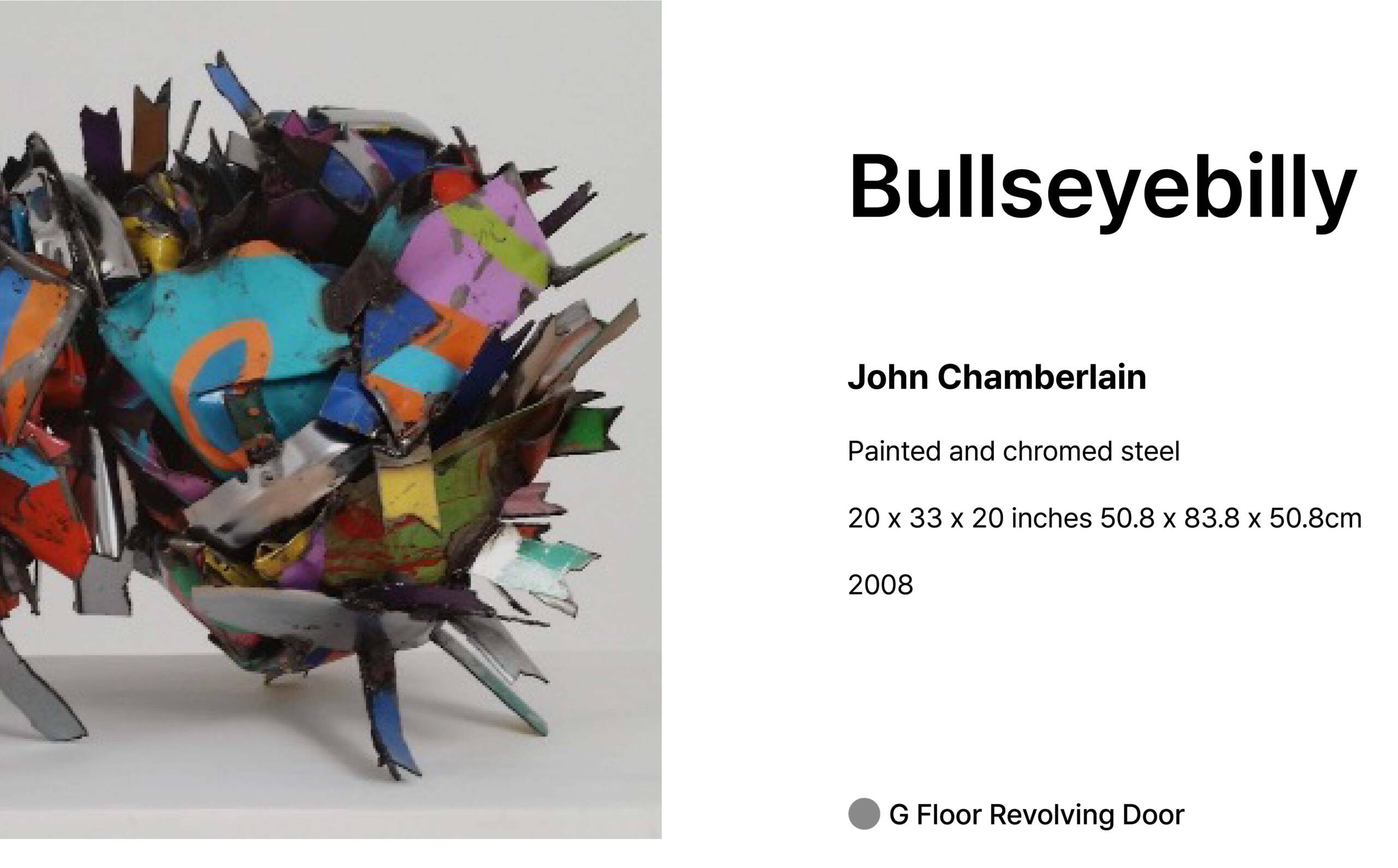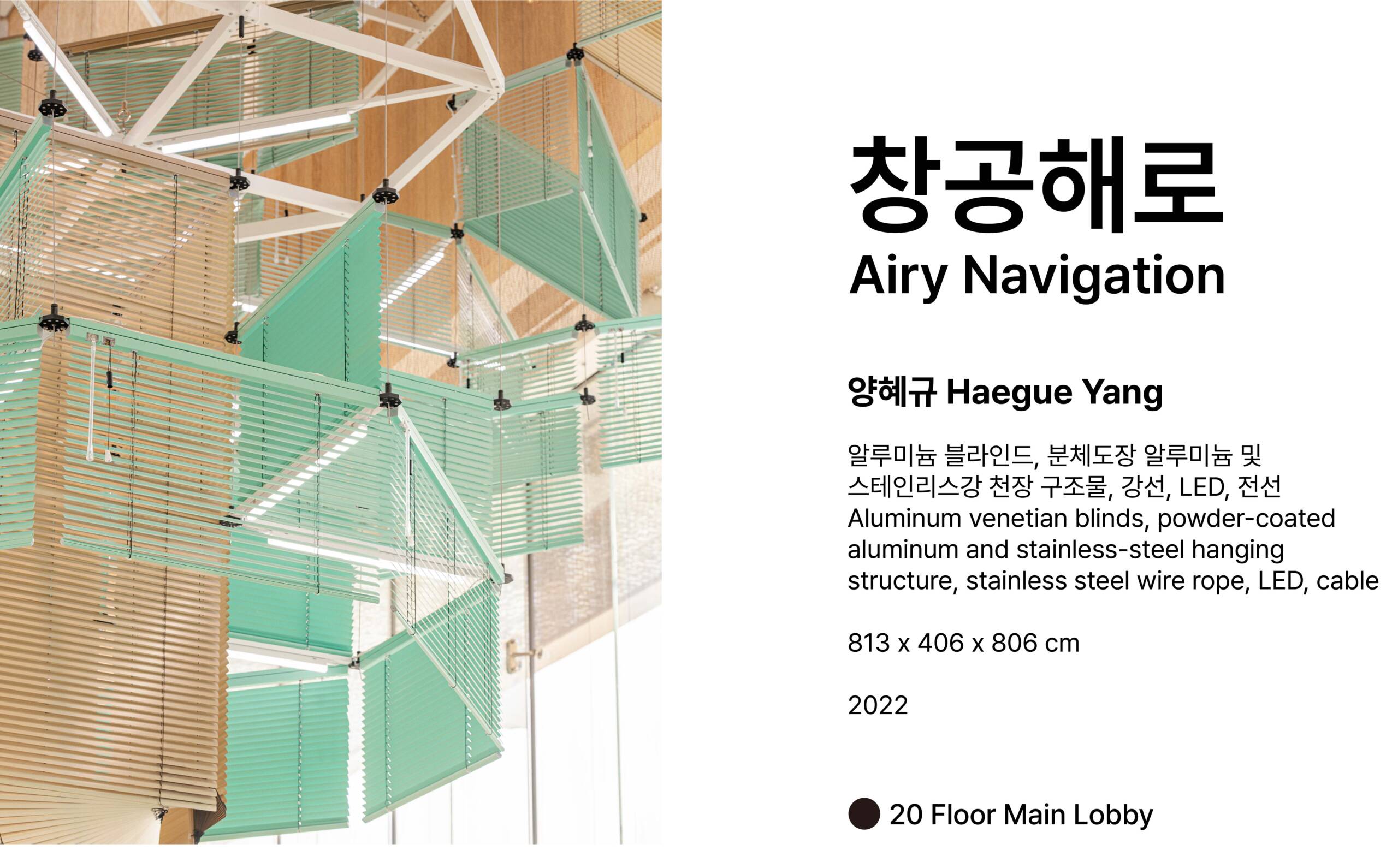호텔 아트워크


<세기의 선물>은 단순한 거대 조각 덩어리가 아닌 순간을 영원히 기억하고 공감하고자 하는 사람들의 마음에 의해 예술로 완성된다. 예술은 멀고 높은 곳에 있는 것이 아니라 가깝고 낮은 곳에 있다. 호텔 나루를 위해 제작된 이 작품은 작가 고유의 모듈 쌓기 방식과 다채로운 색상을 사용해 고전주의와 바로크 양식 기둥의 화려한 형태를 재해석하였다. 바라보는 이에게 예술을 보는 감상의 즐거움과 더불어, 전통과 역사 속 탑의 기원적 의미를 내포하며 희망과 사랑의 메시지를 전한다. 관람객은 작품을 배경으로 기념 촬영을 하고, 그 기록을 공유하거나 참여하는 활동 등을 통해 손쉽게 예술가가 될 수 있다. 그 순간 작품은 일상에 활력을 주는 기념비가 된다.
The Present of the Century reinterprets the colorful forms of Classical and Baroque columns using the artist’s own module-stacking method and vibrant colors. In addition to the joy of viewing art, the work conveys long-established meanings of tower in different traditions and history and sends a message of love and hope to the viewers. The viewer can easily become an artist by taking commemorative photos, participating or sharing the outcomes. At the moment, the work becomes a monument and creates a vibrance to daily life. Art is not by far and high, but at close and low. Not just as a mass of giant sculpture, the work is completed as an art by visitors with a desire to remember and relate to the moment forever.


미국의 폐품 조각가인 존 챔벌린은 불안정하면서 순간적인 정연함을 통해 에너지를 분출시키는 작업을 했다. 챔벌린은 금속 자동차 부품으로 역동적이면서 달콤한 색을 가진 형태이자, 추상 표현주의의 활력과 팝 아트의 언어를 결합한 작품을 만들었다. 그는 1940년대 중반 미 해군의 일원으로 항공모함에서 보낸 시간에서 영향을 받았다고 하며, 금속을 압축하여 복잡한 접힘과 질감을 생성한 다음 서로 다른 요소를 함께 용접함으로써 전체 비율에 관계없이 볼륨과 질량을 강조하는 3차원 콜라주 기법을 발전시켰다. 그의 작품에서 나타나는 형식적 이질성과 작업 과정의 직접성에서 챔벌린이 가진 재료 고유의 속성에 대한 깊은 관심을 볼 수 있다.
John Chamberlain’s (1927–2011) distinctive metal sculptures, often made of crushed automobile steel, reveal both the stately grace and the expressive plasticity of industrial materials. Exploring the interplay of color, weight, and balance, Chamberlain tapped into the energy of Abstract Expressionism, the premanufactured elements of Pop Art and Minimalism, and the provocative folds of the High Baroque.


작품명인 ‘noneloquent’는 ‘기능적이지 않은’이라는 뜻으로, 한국 민속 물건들의 특징에 대해 생각하며 시작된 작업이다. 한국 민속 물건들은 사용자와 제작자가 동일하여 물건이 사용자의 습관, 인체의 사이즈, 목적 등에 완전히 맞춰져 있기 때문에 그 목적이 불분명하게 나타나는 경우가 많다. 이러한 상황에서 다른 사람들은 자신의 상황이나 생활에 맞춰 그 물건을 대입해 사용하게 되고, 결국 물건은 시대와 환경, 사용자의 경험에 따라 그 기능이 해석되고 다양한 목적으로 사용된다. <Noneloquent>는 이러한 사고의 흐름을 유도하는 작업으로 시작되었다. 물건이 가지는 기능을 나타내는 형태가 무작위로 주어졌을 때, 사용자는 이 형태에 대해서 처음에는 ‘이게 뭐지?’ 라고 생각하지만, 곧 자연스럽게 다양한 그 목적성을 찾게 되는 경험을 제공하고자 한다.
The name ‘noneloquent’ means ‘not functional’, and it has started from the characteristics of traditional Korean objects. The traditional Korean objects are often unclear in their purposes because since the maker and the user is identical, they are tailored completely to the person’s habits, body sizes, and intentions. In such circumstances, other people use the objects in ways that fit their own situation or lifestyle. Therefore, the object’s function is interpreted based on different era, environment, and user experience, leading to diverse uses. Noneloquent started as a project to encourage such thought process. When a randomly assigned form is given to an object, a user may initially wonder, “What is this for?”, but soon are led to naturally discover its diverse use and purpose.


<창공해로蒼空海路>는 호텔 나루를 위해 기획된 대형 블라인드 설치작품이다. 높이에 따라 형태가 점진적으로 전개되는 구조는 관객의 시선을 호텔 로비의 통 유리창 밖으로 보이는 ‘마포나루’의 옛 물길로 자연스럽게 이끈다. 상업·무역·교통의 요충지 마포나루를 오고 가던 도하선은 사라졌지만 ‘나루’라는 단어와 마치 돛을 펼치고 물길을 거슬러 항해하는 배처럼 각기 다른 높이로 연결된 블라인드가 마포의 지난 풍경을 떠오르게 한다. 로비에서 작품을 올려다볼 때 색깔의 그라데이션 효과와 블라인드가 교차하며 만들어내는 시각적 형태가 역동성을 자아내기도 한다. 강과 하늘, 땅과 같은 풍경에서 유래한 온화한 중간 색조로 연출된 <창공해로>는 통창으로 들어오는 외부의 빛을 품으면서 절기의 흐름 속에 녹아든다.
Airy Navigation is a site-specific installation for the twentieth-floor atrium in Hotel Naru, Seoul. Consisting of eighty blinds in four different colors and resembling an unfurling staircase, the work soars in a diagonal course across the three-story space. The structure of the work, gradually unfolding in concert with the ascending height, draws the viewer’s gaze to the water of “Mapo Naru” beyond the glass windows of the hotel lobby. While the wooden ferry boats sailing up and down the Mapo Naru, once a significant site of trade and transportation, are long gone, the term “Naru (river port)” and the dynamic assembly of blinds invites to recollect the bustling past scenes of the Mapo area. The blinds that are connected at varying heights float in the air like a ship in full sail navigating up the river. Composed of different colors, the intersecting groups of blinds create a constantly changing effect as they organically overlap and transform according to the viewer’s shifting perspectives. When looking up from the lobby, the combination of the gradated colors and the net-like shape created by the blinds creates a sensation of activating movement. Airy Navigation combines the subtle tones that emanate from the local natural elements of river, sky and land, embracing the light that pours in through the building’s large windows and melts into the flow of the seasons.


작품명인 ‘noneloquent’는 ‘기능적이지 않은’이라는 뜻으로, 한국 민속 물건들의 특징에 대해 생각하며 시작된 작업이다. 한국 민속 물건들은 사용자와 제작자가 동일하여 물건이 사용자의 습관, 인체의 사이즈, 목적 등에 완전히 맞춰져 있기 때문에 그 목적이 불분명하게 나타나는 경우가 많다. 이러한 상황에서 다른 사람들은 자신의 상황이나 생활에 맞춰 그 물건을 대입해 사용하게 되고, 결국 물건은 시대와 환경, 사용자의 경험에 따라 그 기능이 해석되고 다양한 목적으로 사용된다. <Noneloquent>는 이러한 사고의 흐름을 유도하는 작업으로 시작되었다. 물건이 가지는 기능을 나타내는 형태가 무작위로 주어졌을 때, 사용자는 이 형태에 대해서 처음에는 ‘이게 뭐지?’ 라고 생각하지만, 곧 자연스럽게 다양한 그 목적성을 찾게 되는 경험을 제공하고자 한다.
The name ‘noneloquent’ means ‘not functional’, and it has started from the characteristics of traditional Korean objects. The traditional Korean objects are often unclear in their purposes because since the maker and the user is identical, they are tailored completely to the person’s habits, body sizes, and intentions. In such circumstances, other people use the objects in ways that fit their own situation or lifestyle. Therefore, the object’s function is interpreted based on different era, environment, and user experience, leading to diverse uses. Noneloquent started as a project to encourage such thought process. When a randomly assigned form is given to an object, a user may initially wonder, “What is this for?”, but soon are led to naturally discover its diverse use and purpose.


